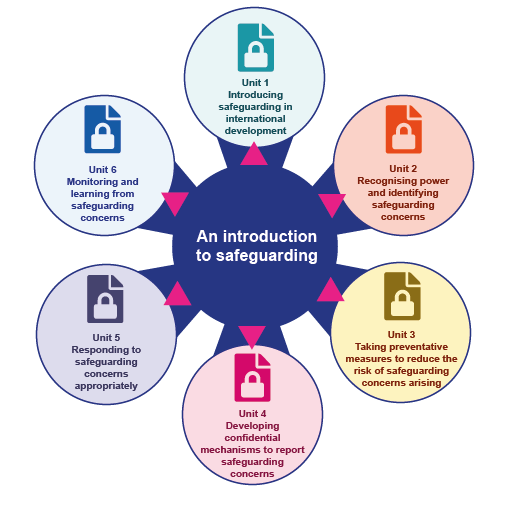Unit 1: Introduction to Safeguarding
1.1 What’s this course about?
![]()
Watch the video above in which your lead educator, Aneeta Williams, welcomes you and gives you an overview of what you will be learning about on this course.
Safeguarding children, vulnerable adults and our staff as well as associated personnel is a legal and moral obligation for all those who work in international development agencies.
It has increasingly become an important area of risk for organisations working in the humanitarian and international development sector. It is everyone’s responsibility to safeguard and to prevent, report on and respond to harm that occurs to children, vulnerable adults and staff and associated personnel by putting measures in place to reduce the risk of harm, injury or abuse.
However, several high-profile safeguarding incidents in recent years such as those occurring within Oxfam GB, Save the Children UK, MercyCorps USA and Amnesty International, to name just a few, have highlighted the need for more effective safeguarding systems and processes to prevent and respond to sexual abuse, exploitation, and sexual harassment (SEAH) in the sector.
If you are working in this sector, safeguarding people that you and your organisation have direct or indirect contact with must be given priority. It’s good practice that staff and associated personnel are provided with the opportunity to develop more in-depth knowledge in order to put safeguarding people at the centre of everything that your organisation does.
Organisations should identify a Designated Safeguarding Officer, Safeguarding Lead or Safeguarding Focal Persons so that safeguarding concerns can be reported and responded to appropriately.
This course has been designed for those of you who are new to those positions, and it aims to support you on your journey. It will equip you with the skills and tools you need to play your part in responding to this new and exciting role.
Also, the materials in the course are equally relevant to individuals who may not currently be working in an international organisation but wish to continue refreshing and updating their knowledge and skills.
![]()
By the end of this course, you will be able to:
- Identify the risks associated with those who work for or are engaged with your organisation when they are in contact with others.
- Summarise and explain the different forms of harm, abuse and exploitation, and associated indicators that may be suffered by people with whom your organisation works.
- Use a safeguarding framework based on international standards and donor requirements to improve on safeguarding policies, procedures and practice.
- Support the design of appropriate preventative, reporting and response mechanisms to handle safeguarding concerns.
- Support the development of a safeguarding culture of accountability in your organisation and in communities for safeguarding concerns to be reported and responded to appropriately.
The course should take around 24 learning hours and is divided into 3–4 hours per unit over 6 units (although you can study it at your own pace). The outline of the course content is:

A downloadable version of this diagram is available below.
